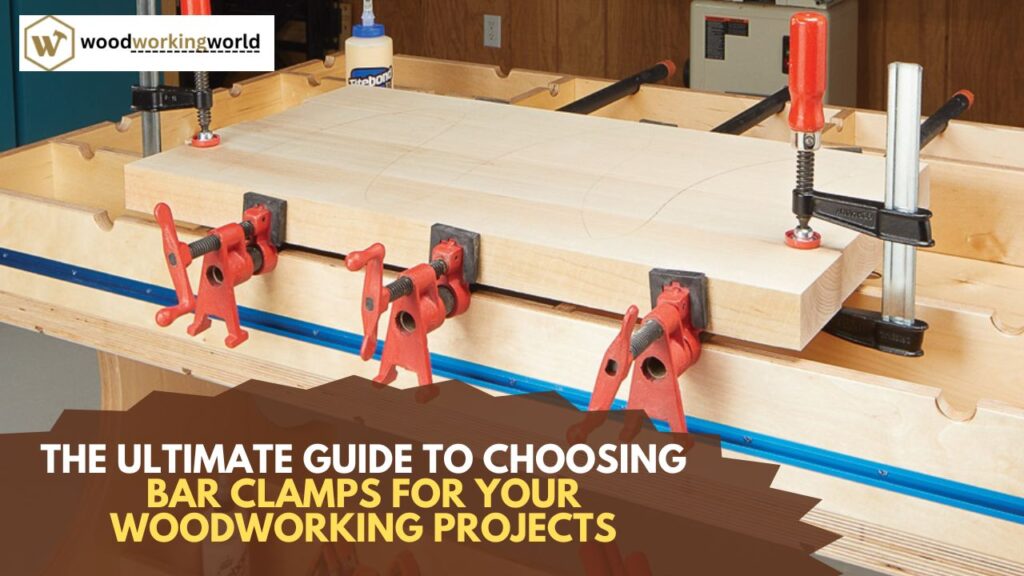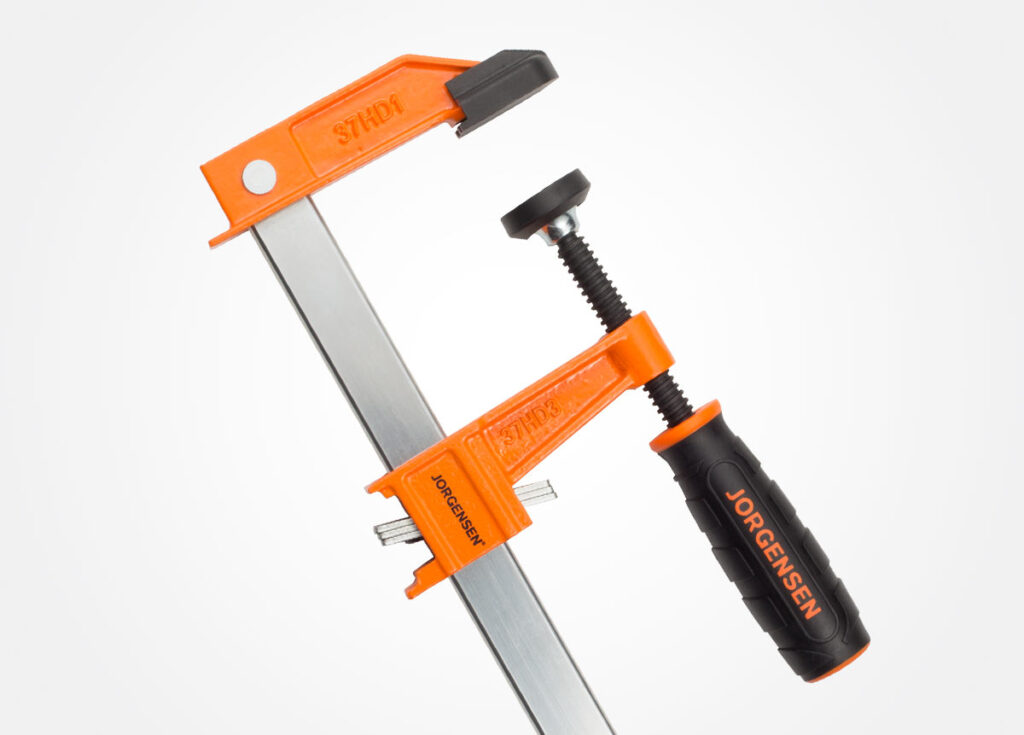Bar Clamps for Your Woodworking Projects: Woodworking is a timeless craft that requires precision, skill, and the right set of tools. Among the tools in a woodworker’s workshop, bar clamps are indispensable for their versatility and functionality. Whether you’re an experienced craftsman or a beginner woodworker, having the right bar clamps can make a big difference in the success of your projects. This guide aims to help you understand the world of bar clamps so you can choose the right ones for your woodworking needs.

What Are Bar Clamps?
Bar clamps, also known as F-clamps, are essential tools for holding wood pieces together securely during gluing, assembly, or other processes. They consist of a fixed jaw, a sliding head, and a long bar or rail. The sliding head can be adjusted along the bar to accommodate various workpiece sizes, while the fixed jaw provides stability.
Types of Bar Clamps for Your Woodworking Projects
- Parallel Bar Clamps
- These clamps have jaws that remain parallel to each other as they move along the bar.
- Ideal for working on large, flat surfaces and panel glue-ups.
- They provide even pressure across the entire length of your workpiece.


- Utilize a length of threaded pipe as the bar, making them adaptable to different project sizes.
- Affordable and versatile, commonly found in woodworking shops.
- Suitable for both small and large projects.
- Quick-Grip Bar Clamps
- Feature a trigger mechanism for fast and easy one-handed operation.
- Great for temporarily holding pieces in place during assembly.
- Available in various sizes, though they may not offer the strongest clamping force.


- Deep Reach Bar Clamps
- Designed with a longer bar and greater throat depth for reaching deeper into the workpiece.
- Ideal for clamping the center of large panels or working on projects with irregular shapes.


What to Consider When Choosing Bar Clamps
- Clamping Capacity
- Think about the size of projects you typically work on and choose clamps with enough clamping capacity.
- Having a range of sizes is useful to accommodate different project needs.
- Throat Depth
- The throat depth is the distance from the bar to the center of the clamping pad. A deeper throat allows you to work with different shapes and sizes of workpieces.
- Material and Build Quality
- Look for clamps made from sturdy materials like steel or aluminum for durability and stability.
- Pay attention to the quality of the sliding mechanism and the grip on the handle for ease of use.
- Bar Material
- The bar material affects the clamp’s overall strength and rigidity.
- Steel bars offer strength and stability, while aluminum bars are lighter and suitable for lighter applications.
- Ease of Use
- Choose clamps with ergonomic handles for comfortable operation, especially if you plan on using them for extended periods.
- Quick-release mechanisms can save you time and effort during repetitive tasks.
- Price and Brand Reputation
- While you may be tempted to opt for the cheapest option, investing in quality clamps from reputable brands ensures reliability and longevity.
- Read reviews and consider the experiences of other woodworkers to make an informed decision.
Tips for Proper Use and Maintenance
- Proper Alignment
- Make sure the jaws are aligned parallel to each other to distribute pressure evenly across the workpiece.
- Even Pressure Distribution
- Tighten the clamp gradually on both sides to prevent uneven pressure, which could lead to warping or distortion.
- Protective Pads
- Use soft jaw pads or wooden blocks to protect the workpiece from clamp marks or damage.
- Regular Cleaning and Lubrication
- Keep the clamps clean and lubricate moving parts to ensure smooth operation and prevent rust.
- Storage
- Store clamps in a dry environment to prevent corrosion, and avoid hanging them by the bar to maintain alignment.
Conclusion: Bar Clamps for Your Woodworking Projects
Choosing the right bar clamps for your woodworking projects is key to achieving precision and efficiency in your craft. Consider the specific needs of your projects, the types of materials you work with, and the convenience of the clamp design. By investing in quality bar clamps and understanding how to use and maintain them properly, you’ll enhance your woodworking experience and produce outstanding results. Happy woodworking!
I hope this article on Bar Clamps for Your Woodworking Projects has been helpful. If you have any further questions, please feel free to leave a comment below.
Video
